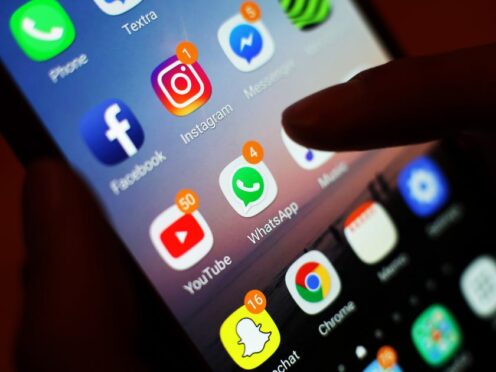
Two tribal nations are accusing social media companies of contributing to the disproportionately high rates of suicide among Native American youth.
Their lawsuit filed on Tuesday in Los Angeles county court names Facebook and Instagram’s parent company Meta Platforms; Snapchat’s Snap Inc; TikTok parent company ByteDance; and Alphabet, which owns YouTube and Google, as defendants.
Many US teenagers use social media, and roughly one in six describe their use as “almost constant”, according to the Pew Research Centre.
But Native youth are particularly vulnerable to these companies’ addictive “profit-driven design choices,” given historic teen suicide rates and mental health issues across Indian Country, chairperson Lonna Jackson-Street of the Spirit Lake Tribe in North Dakota said in a press release.
“Enough is enough. Endless scrolling is rewiring our teenagers’ brains,” added Gena Kakkak, chairwoman of the Menominee Indian Tribe of Wisconsin. “We are demanding these social media corporations take responsibility for intentionally creating dangerous features that ramp up the compulsive use of social media by the youth on our reservation.”
Their lawsuit describes “a sophisticated and intentional effort that has caused a continuing, substantial, and long-term burden to the tribe and its members,” leaving scarce resources for education, cultural preservation and other social programmes.
A growing number of similar lawsuits are being pursued by US school districts, states, cities and other entities, claiming that TikTok, Snapchat, Instagram and YouTube exploit children and adolescents with features that keep them constantly scrolling and checking their accounts.
New York City, its schools and public hospital system accuse the platforms of fuelling a childhood mental health crisis that is disrupting learning and draining resources.
School boards in Ontario, Canada, claim teachers are struggling because platforms designed for compulsive use “have rewired the way children think, behave, and learn”.
The Associated Press approached the companies for comment. Google said “the allegations in these complaints are simply not true”.
“Providing young people with a safer, healthier experience has always been core to our work,” Google spokesman Jose Castaneda said in a statement. “In collaboration with youth, mental health and parenting experts, we built services and policies to provide young people with age-appropriate experiences, and parents with robust controls.”
Snap Inc said it provides an alternative to a feed of online content. “We will always have more work to do, and will continue to work to make Snapchat a platform that helps close friends feel connected, happy and prepared as they face the many challenges of adolescence,” the company’s statement said.
Native Americans experience higher rates of suicide than any other racial demographic in the US, according to the Centres for Disease Control and Prevention, jumping nearly 20% from 2015 to 2020 compared with a less-than 1% increase among the overall US population.
Mental health care is already difficult to access from remote locations, and generations of colonisation and social stigma create more barriers, particularly when the care is not culturally appropriate, advocates say.
About 87% of people who identify as Native American do not live on an Indian reservation, according to the 2020 US Census, and social media can help them connect with tradition, culture and other tribal communities.
But “they also might experience discrimination online. And social media companies don’t always have great, helpful policies for managing that”, said Andrea Wiglesworth, an enrolled member of the Seneca-Cayuga Nation and Shawnee Tribe who researches stress in Native populations at the University of Minnesota.
Native American identity is a complex mix of political and cultural experiences that varies from tribe to tribe and within indigenous communities, adding a unique layer of stress onto other social pressures, Wiglesworth said.
“I won’t speak for all Native people, but from my lived experience there is this sense of shared responsibility for the wellbeing of our community and community members,” she added. She said indigenous people need to think about how they carry that commitment into the digital world.
In Congress, a bipartisan group of senators is supporting the Kids Online Safety Act, which in part would require platform design changes to prevent harm.
Tech industry groups have opposed the Bill, and the American Civil Liberties Union has raised censorship concerns.

Enjoy the convenience of having The Sunday Post delivered as a digital ePaper straight to your smartphone, tablet or computer.
Subscribe for only £5.49 a month and enjoy all the benefits of the printed paper as a digital replica.
Subscribe